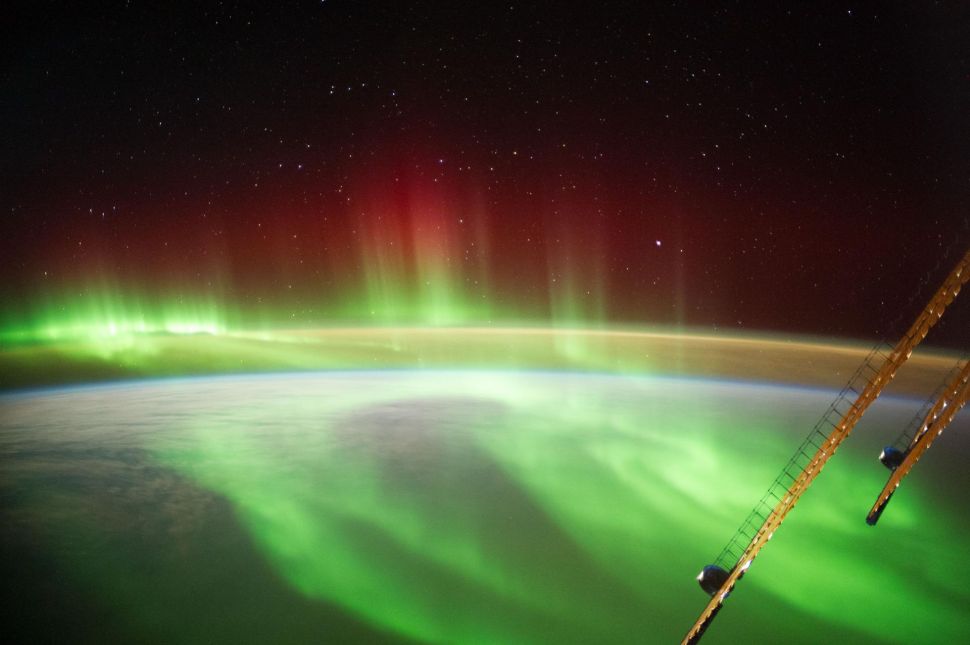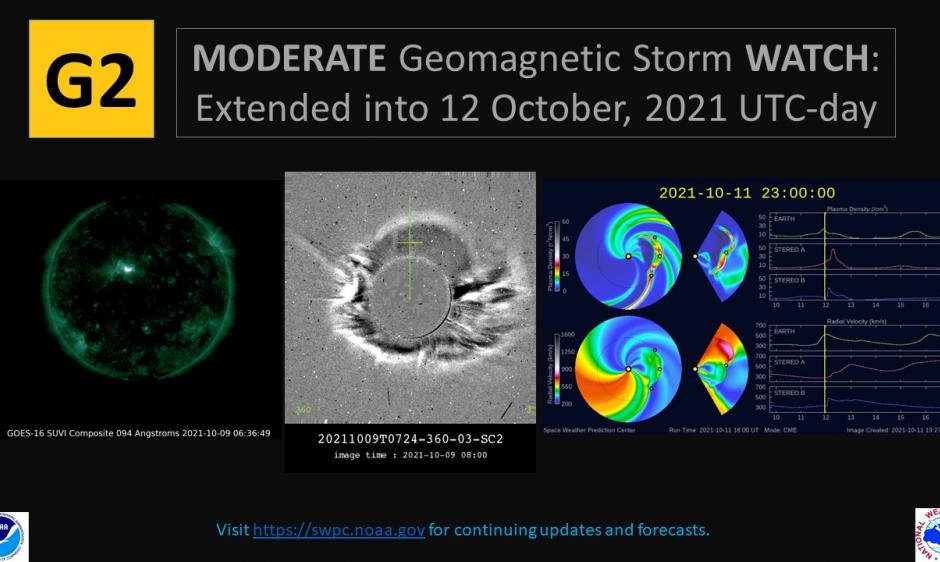Solar storm hits Earth, bringing northern lights to New York

A solar storm hit Earth and brought with it a spectacular light show visible as far south as New York.
A massive solar flare, or coronal mass ejection (CME), was spotted on the sun Saturday (Oct. 9) on its Earth-facing side and the flare hit our planet yesterday (Oct. 11). This event comes as Earth enters a period of heightened solar activity known as the solar maximum (solar activity increases and decreases about every 11 years.) The National Oceanic and Atmospheric Administration (NOAA) warned that the storm would be a category G2 event, which is moderately strong.
Solar storms of this magnitude can affect satellites in orbit around Earth, cause disruptions in power grids and more. But they can also spark a magnificent aurora, a natural light show that's typically only seen in high-latitude regions near the north or south poles. But this storm was so powerful that it was visible as far south as New York and as far across the United States as Wisconsin and Washington state, NOAA reported.
Related: Where to see the northern lights: 2021 aurora borealis guide
NOAA put out a geomagnetic storm watch for Oct. 11 that was extended into Tuesday (Oct. 12). On Monday NOAA warned that satellite orientation irregularities, power grid fluctuations and more could occur as a result of the moderate storm. On Tuesday those impacts were reduced to primarily possible fluctuations in wear power grids.
As the storm's effects linger, auroras may still be visible Tuesday night at high latitudes, in locations like Canada and Alaska, according to NOAA. But skywatchers in other locations who were lucky enough yesterday could have gotten an eyeful in locations like New York where auroras are very rarely visible at all.
In South Dakota in the U.S., photographer Randy Halverson was able to capture an incredible view of the aurora on Oct. 11.
Breaking space news, the latest updates on rocket launches, skywatching events and more!
Aurora from central SD last night. pic.twitter.com/oLjeANCTkrOctober 12, 2021
Solar storms like this are common space weather events as the sun regularly emits CMEs from its atmosphere. CMEs are made up of electrically charged plasma and, after the sun spits it out, this plasma travels outwards and can hit Earth's magnetic shield.
When this plasma hits our planet's shield, the charged particles move toward Earth's poles releasing energy as colorful light: this is how auroras happen.
Email Chelsea Gohd at cgohd@space.com or follow her on Twitter @chelsea_gohd. Follow us on Twitter @Spacedotcom and on Facebook.

Chelsea “Foxanne” Gohd joined Space.com in 2018 and is now a Senior Writer, writing about everything from climate change to planetary science and human spaceflight in both articles and on-camera in videos. With a degree in Public Health and biological sciences, Chelsea has written and worked for institutions including the American Museum of Natural History, Scientific American, Discover Magazine Blog, Astronomy Magazine and Live Science. When not writing, editing or filming something space-y, Chelsea "Foxanne" Gohd is writing music and performing as Foxanne, even launching a song to space in 2021 with Inspiration4. You can follow her on Twitter @chelsea_gohd and @foxannemusic.

